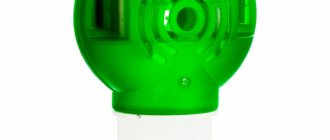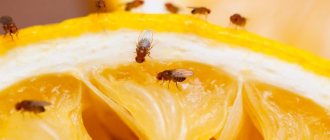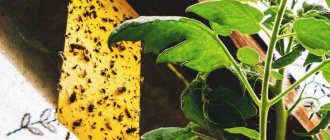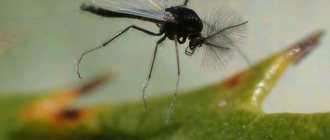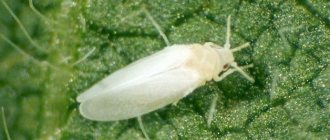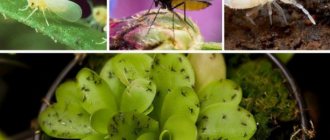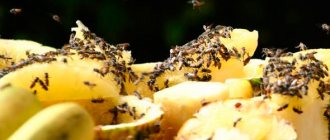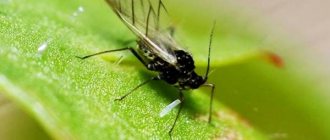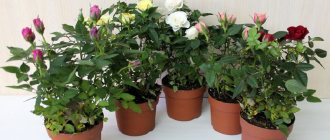Home » Useful information » Diseases and pests
Editor choice
Olga Polyakova 03/17/2020
9427 Views 2 comments
Growing flowers at home is a very common hobby, to which almost all inhabitants of our planet devote their time to one degree or another.
Most indoor plants have already passed all possible stages of selection and, subject to agricultural practices, can successfully fight any diseases.
Varieties of midges
Households do not immediately detect midges. Initially, the pests are in the ground. They appear on the surface after watering. A little time passes, and a swarm of insects circles above the flower. The spectacle is horrifying, and something needs to be done about it. Midges do not sting or bite people. However, its presence can not only destroy the flower, but also harm human health, causing an allergic reaction and respiratory disease.
What types of midges are found on indoor flowers? The list is impressive:
| Kinds | Description |
| Drosophila | Small flies of a yellowish tint with light wings. The eyes are red. Females are larger than males. They have a pointed abdomen. They eat spoiled vegetables and fruits. They prefer to live in the kitchen and in the trash can. But they can also live in a flower pot. They are happy there with warmth, organic fertilizing, high humidity and rotten leaves. |
| Whiteflies (aleroidids) | In appearance they resemble butterflies. Small, white. They choose a place on the back of the foliage. They eat juice. The eggs laid quickly transform into larvae. When there are many of them, the flowers become whitish. Just touch the pot and a swarm of whiteflies will rise into the air. Most often they settle on begonias, orchids and fuchsias. |
| Sciarides | They are also called fungus gnats. The body is narrow, the head is round, they are grayish and black. They live in moist soil, where the process of decay occurs. Translucent larvae up to 10 mm long are laid in the ground. |
| Thrips | There are black, gray and brown midges. Quite mobile individuals. Adults constantly move from flower to flower, laying eggs inside the leaf. After hatching, the larvae immediately begin to feed on the sap, causing harm to the flower. How do you know when thrips are present? The foliage is covered with streak-like spots and white larvae. Dark midges fly around the crown. |
| Podura (springtails) | A distinctive feature of pests is that they cannot fly, they only jump. Present in every pot. Populations are small, so they are difficult to notice. Springtails are white in color and resemble caterpillars in appearance. They give themselves away when their number becomes large. They love dampness and feed on organic ingredients. |
| Shields | A parasite that reproduces at tremendous speed. Prefers to settle on flowers with hard and smooth leaves. The scale insect cannot be ignored. The leaves are covered with convex or flat oval-shaped shields and a light brown hue. |
| Spider mite (red spider) | The most common type of pest. The main sign of the appearance of a parasite is the presence of a thin and transparent cobweb on the flower. Small punctures may also appear on the leaves. They reproduce well in a dry room that is rarely ventilated and not moistened. The appearance of spider mites causes the leaves to turn pale or gray, dry out and fall off. |
| Leaf aphid | Does nasty things all year long. The sizes are miniature, but aphids are easy to spot. The color is very diverse: red, black, yellow, brown, green. Loves soft and delicate foliage, young shoots, buds. It poses a great danger to weakened flowers. Their growth slows down and they quickly wither away. |
| Mealybug | Reminds me of tiny pieces of cotton wool. It is difficult to notice, since it prefers to hide in the axils of the leaves. It is dangerous for all flowers, especially when the number of mealybugs reaches huge numbers. |
Why do midges appear in flowers?
To avoid the reappearance of insects, try to figure out where they came from.
Improper watering
Constantly waterlogged soil creates ideal conditions for insects. Drosophila can even settle in a swampy pan.
Stagnant air
Pests feel best and actively reproduce in rarely ventilated rooms without ventilation systems.
Uncultivated land
Midges can be brought in along with the soil. Moreover, both store-bought and collected at the dacha or in the forest.
External factors
Midges may well fly into an open window or window and enter an apartment along with bouquets or potted flowers.
Fungus gnats often enter rooms through hoods and ventilation shafts from warm and humid basements.
Spoiled vegetables and fruits
Waste vegetables or fruits that were not thrown out on time also become housing for fruit flies and black midges. And from them the midges move to the flowers.
Choose!


